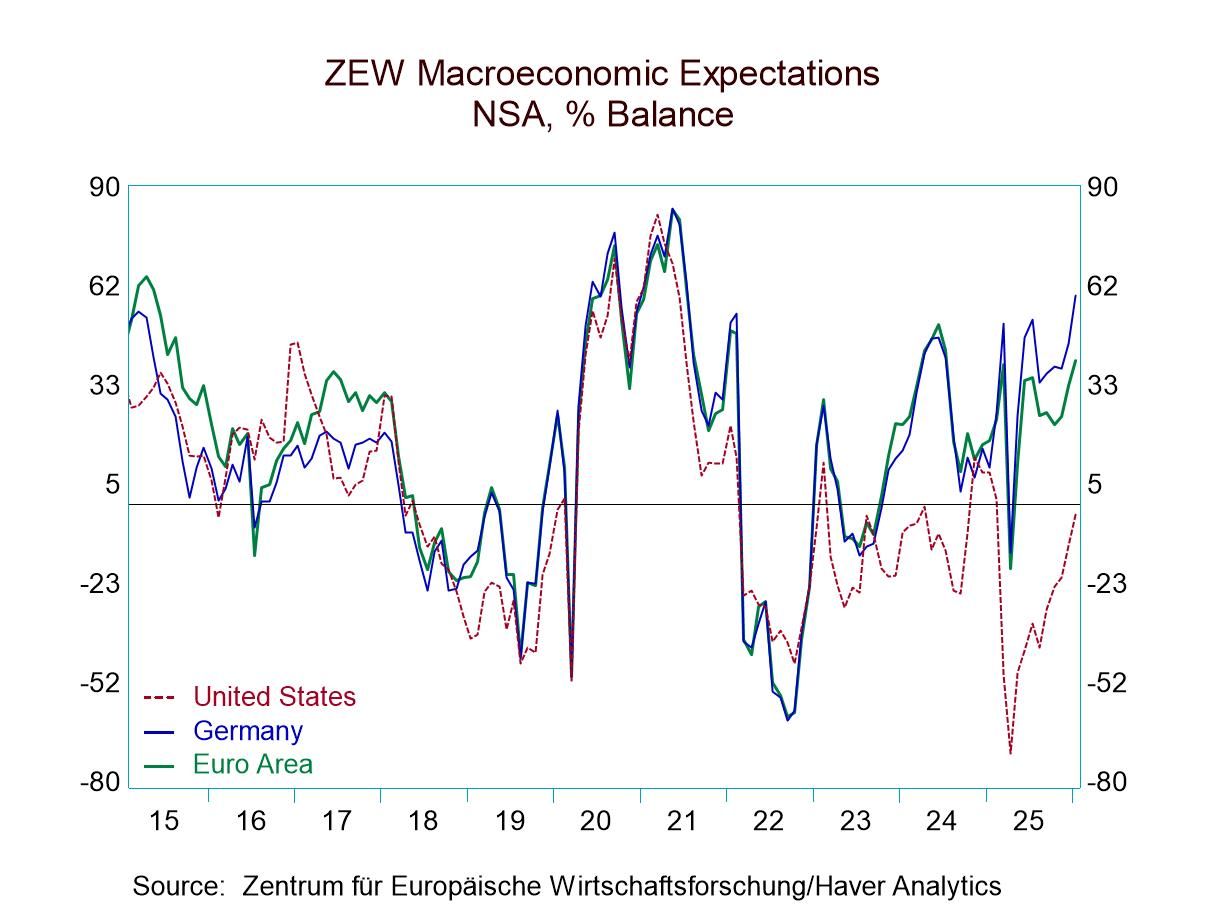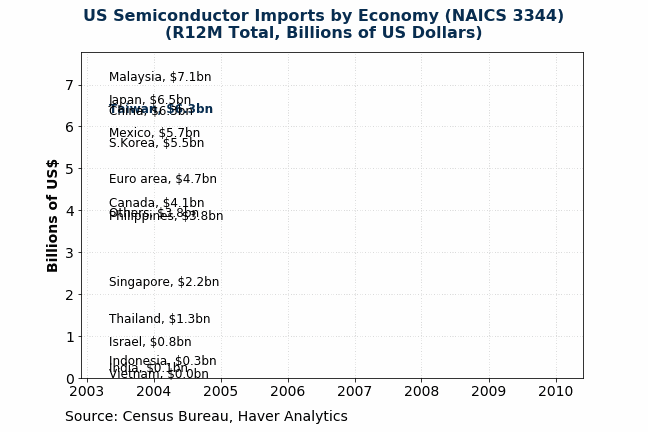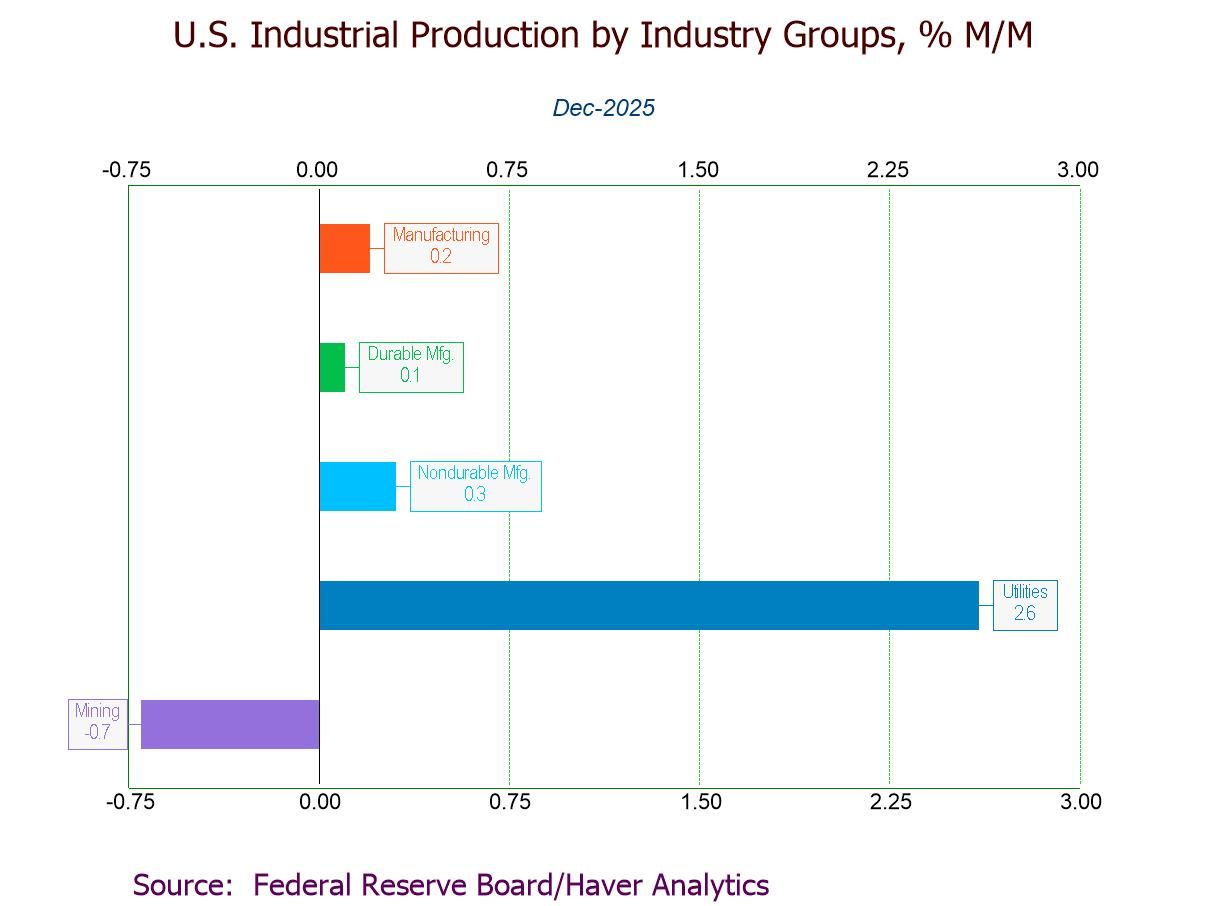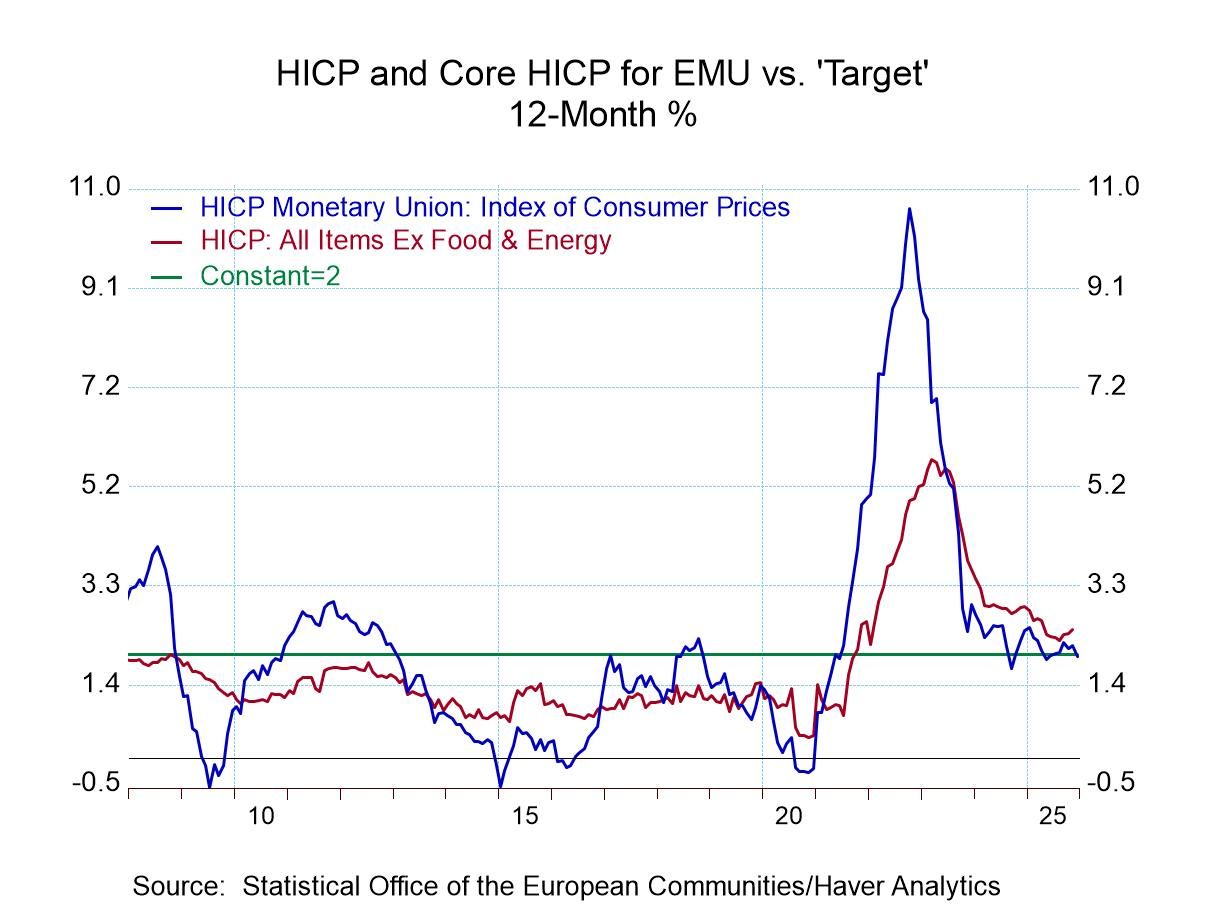 Global| Oct 28 2022
Global| Oct 28 2022Charts of the Week (Oct 28, 2022)
by:Andrew Cates
|in:Economy in Brief
Summary
Leading indicators that have been published in recent days suggest the outlook for the world economy has continued to darken and that global recession risks are rising. Our first few charts this week underscore that message with some perspectives on US economic data, European credit conditions, China's housing market and the stance of fiscal policy in the world's major economies. On a brighter note, however, our fifth chart homes in on Europe's plummeting natural gas prices in recent days, which is obviously good news for its growth and inflation outlook. Finally – and from a longer term perspective – we look at global temperature anomalies and with some observations about a possibly surprising trend that has emerged over the last few years.
Leading indicators Incoming economic data have been conveying a mixed message about the odds of a US recession in recent weeks. But there are very few indicators that have been as reliable in foreshadowing a recession in the past as the US Conference Board's composite leading economic indicators. This index slipped by 0.4% in September and has now declined by 2.9% over the past 6 months. That 6-month pace of decline is quite big and would typically signal that a US recession is now pending based on its performance ahead of recessionary phases over the past 60 years (see chart 1 below).
Chart 1: The US Conference Board Leading Indicator suggest the economy is flirting with recession

Tighter credit conditions in Europe Numerous survey indicators for Europe reveal a similar – if not bleaker – message about that region's economic outlook. One of these is the quarterly ECB survey of bank lending conditions, the Q4 data for which were released earlier this week. This revealed a sharp tightening in lending conditions to both firms and households, as evidenced in chart 2 below. The survey also signaled, perhaps unsurprisingly, a steep drop in demand, most notably in the housing market.
Chart 2: Q4 ECB lending survey reveals tighter lending standards

China's housing market This week's batch of economic data also revealed that China's housing market took a further turn for the worse in September. Newly started construction and completions in the real estate sector are still falling at a very rapid rate (in year-on-year terms), as evidenced in chart 3 below.
Chart 3: China's housing starts and completions

Fiscal policy tightening Although the focus of financial markets has been on the growth-sapping impact of more restrictive monetary policy in recent months, the stance of fiscal policy is also not helping matters. The latest forecast figuring in the IMF's October fiscal monitor certainly suggests there has been a very sharp degree of belt-tightening in the G7 economies over the past 2 years. This admittedly reflects, in large part, the wind-down of generous packages of spending support that were instigated in many countries at the start of the pandemic. But revenue-raising measures (i.e. higher taxes) have also been instigated in some countries and are clearly now placing a brake on domestic demand too.
Chart 4: Fiscal policy in G7 economies is very restrictive according to the IMF

European natural gas prices Returning to Europe, a glimmer of hope for the region's prospects has emerged in recent days via a sharp drop in energy prices. Specifically, natural gas prices at the Dutch TTF hub, Europe's benchmark, have declined to levels last seen in June over the past few days. Strong imports of liquefied natural gas (LNG) and the milder weather that's expected over the next few weeks are key reasons.
Chart 5: European natural gas prices versus energy price inflation

Global warming Finally this week, we look at global surface temperature anomalies, a description of how the overall average temperature of the surface of the Earth deviates from what is expected. The value is specifically obtained by measuring the average water temperature of the first few meters below the surface of the ocean and the temperature between the land surface and 1.5 meters above. The data for this shown in chart 6 clearly reveal a multi-year trend starting in the late 1970s toward a much warmer-than-normal climate. The past 5 to 6 years, however, have seen some flattening of that upward trend, at least for now.
Chart 6: Global surface temperature anomalies

Andrew Cates
AuthorMore in Author Profile »Andy Cates joined Haver Analytics as a Senior Economist in 2020. Andy has more than 25 years of experience forecasting the global economic outlook and in assessing the implications for policy settings and financial markets. He has held various senior positions in London in a number of Investment Banks including as Head of Developed Markets Economics at Nomura and as Chief Eurozone Economist at RBS. These followed a spell of 21 years as Senior International Economist at UBS, 5 of which were spent in Singapore. Prior to his time in financial services Andy was a UK economist at HM Treasury in London holding positions in the domestic forecasting and macroeconomic modelling units. He has a BA in Economics from the University of York and an MSc in Economics and Econometrics from the University of Southampton.






